A Striking Black and White House Adorns Old Stone Ruins
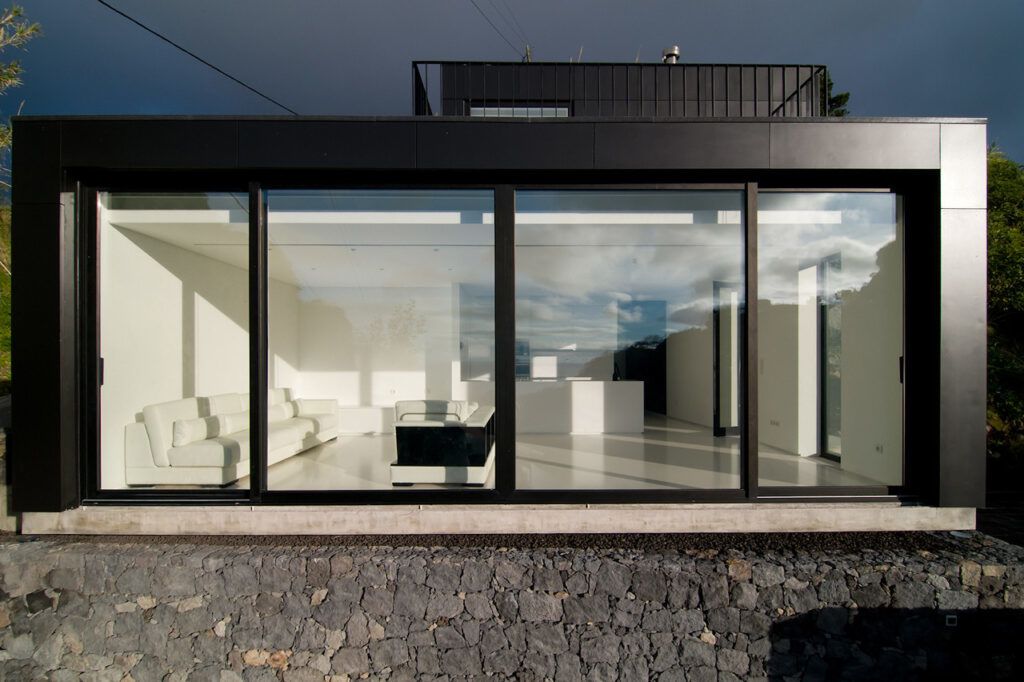
Stone ruins along a hillside in Portugal have been married with modern, monochromatic simplicity in this residential project by N2X Aarquitectos. Overlooking a small village, the site is highly visible from below, and the ruins of Lugar da Ribeira da Praia have long been a historic landmark for the area. The new black and white house creates contrast, visual interest and maximum utility.
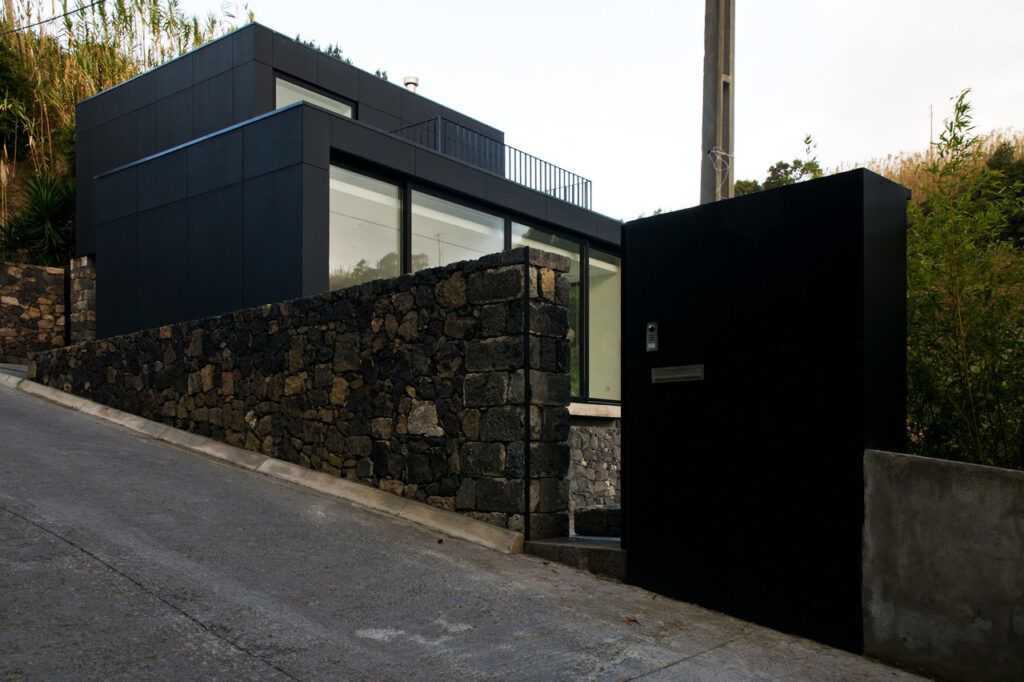
While the new addition contrasts with the rustic character of the stone, it doesn’t fight against it. Two stacked volumes in black enable the restored walls to stand out even more than they did previously. Roof space on the offset first floor is now a terrace looking out over the town, with views of the sea beyond the hills.
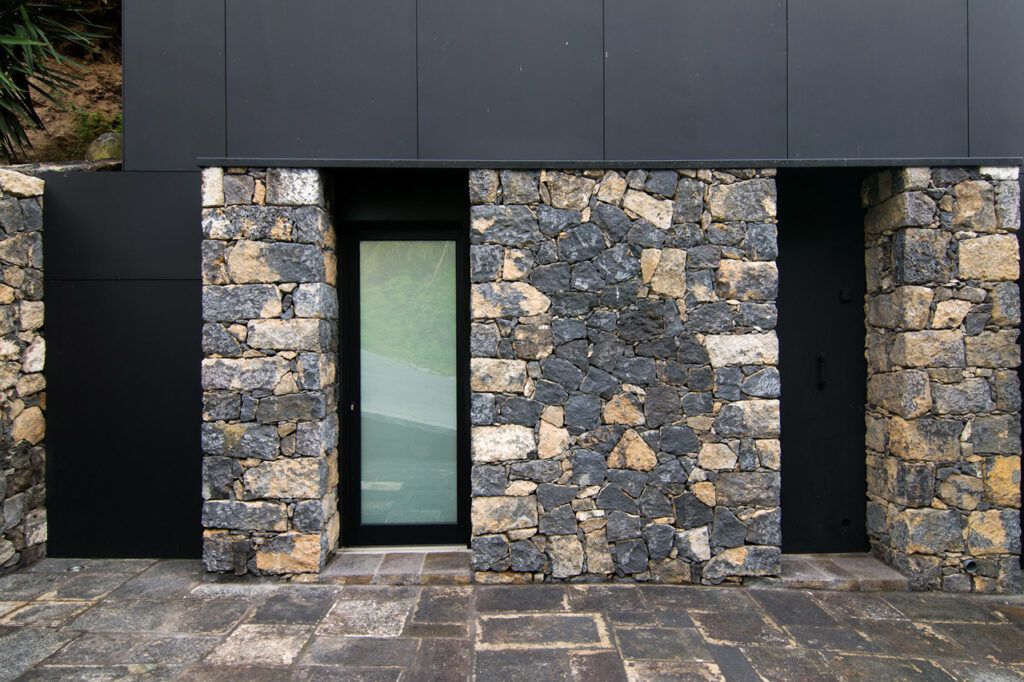
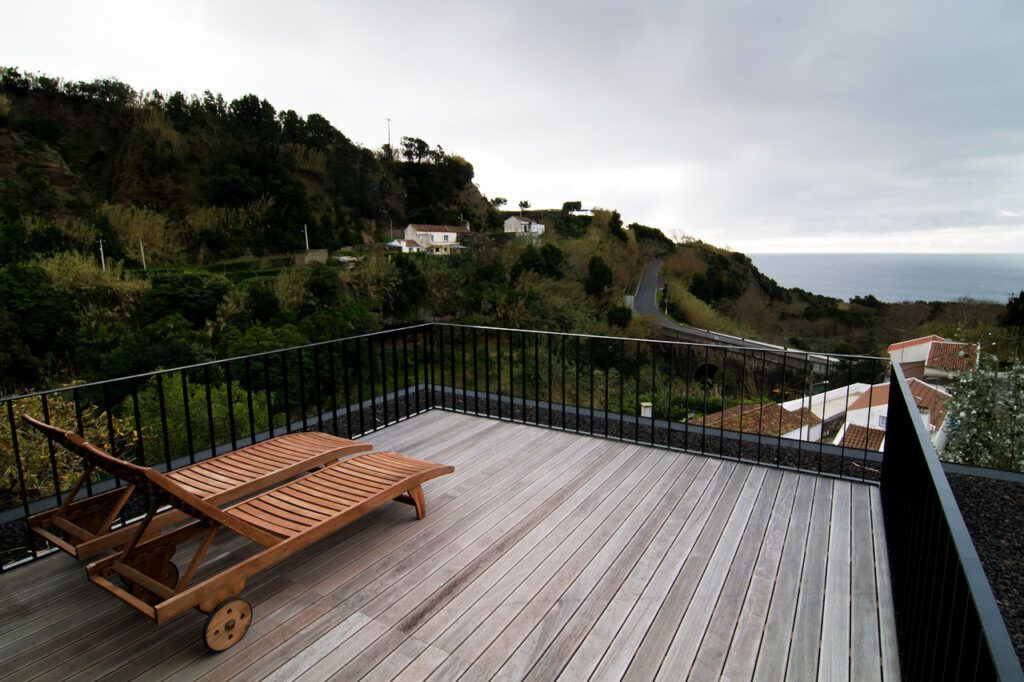
The home seems to rest lightly upon the ruins, looking as if it were effortlessly dropped into place from above. The new construction fills in the voids that were left behind when the rest of the historic structure crumbled. It’s also sustainable, with solar energy and rainwater collection for use on the landscaping.
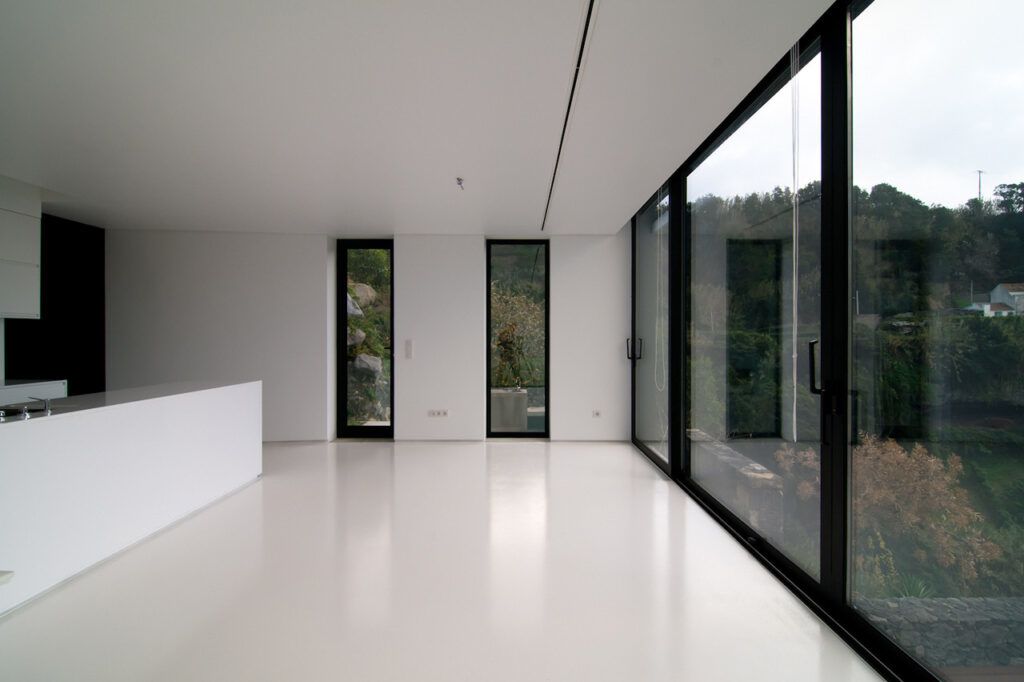
The interior is almost entirely painted in white gloss, with the exception of a dark wood-paneled hallway. Floor-to-ceiling windows and glass doors leading out to the terrace blur the lines between inside and out.

More from N2X Arquitectos
“We started from an unusual context, as this plot housed some ruins at a higher location, naturally kept apart from the surrounding lower agglomerate with which it apparently dialogues and which we then designated as ‘village.’ The project’s idea is to ‘fill’ the physical emptiness existing in these ruins by constructing two related modules that overlap each other and are similar to one another material-wise, but that differ in their limits, making evident the construction principle based on the loose and mismatched stone of the ruins and its surrounding walls.”
“Maintenance of the ruins’ external walls allowed for keeping its identity and the local’s memory as well as to stress the present and evolution of concepts and languages prone to the human experience.”




